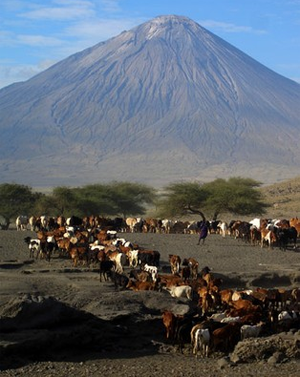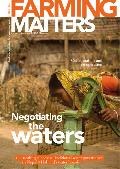In our June 2005 issue, an article explained how GIAHS (Globally Important Agricultural Heritage Systems) was being developed to safeguard the world’s most valuable traditional agricultural systems, reflecting rich biodiversity, knowledge systems and cultures. David Boerma, now working on a large GIAHS initiative funded by the German government in Tanzania and Kenya, explains how the concept has moved on since then.

Protecting special agricultural systems is not easy. It starts with proper recognition, which according to Boerma is a major challenge: “One of the biggest lessons from the pilot project was that in order to maintain these systems, you need to spend an enormous amount of time sensitising governments to put the farmer at the centre.” In places with top-down governments, a whole change in thinking needs to take place.
“In Africa you have to work hard to get rid of the deeply engrained prejudices about small-scale farmers and traditional systems being backward.” GIAHS is a concept that crosses many sectors, and this involves learning how to bring together different government agencies to work towards a common goal.
Boerma works in two countries with a mixture of ministries and agencies, with responsibilities for agriculture, livestock, the environment, wildlife services, heritage, tourism and natural resources. He insists that all the team members attend all the meetings, which has paid off: “nobody blocks the process because everyone is included.” The first step is getting people to recognise the importance of GIAHS: after that the protective policies can (eventually) be put in place.
Farming communities are often confused by conflicting advice, much of it telling them to abandon their old ways. Boerma works from the principle of “free prior and informed consent” in guiding communities to come to informed decisions about the consequences, good or bad, of different choices, as well as the risks involved.
Establishing exactly what to preserve is often a major discussion point. While the World Heritage Convention seeks to preserve sites exactly as they are, GIAHS is based on the concept of “dynamic conservation”. This means supporting the continued existence of a special landscape or agroecosystem, but allowing it to adapt so as to ensure food security and sustainable livelihoods for farmers.
Boerma explains: “These systems are innovative because they are able to adapt to specific ecological and cultural processes in the area.” For example, the Maasai’s rotational grazing system in Kenya and Tanzania is under pressure because of a decreasing land base for pasture and a lack of access to water. By building water points and starting sustainable tourism activities the project is trying to prevent this unique GIAHS from disappearing.
More information: David Boerma can be reached at AWF, P.O Box 2658, Arusha, Tanzania, or via e-mail: david.boerma@fao.org.
More information about GIAHS can be found here: http://www.fao.org/nr/giahs/en
Text: Mundie Salm

